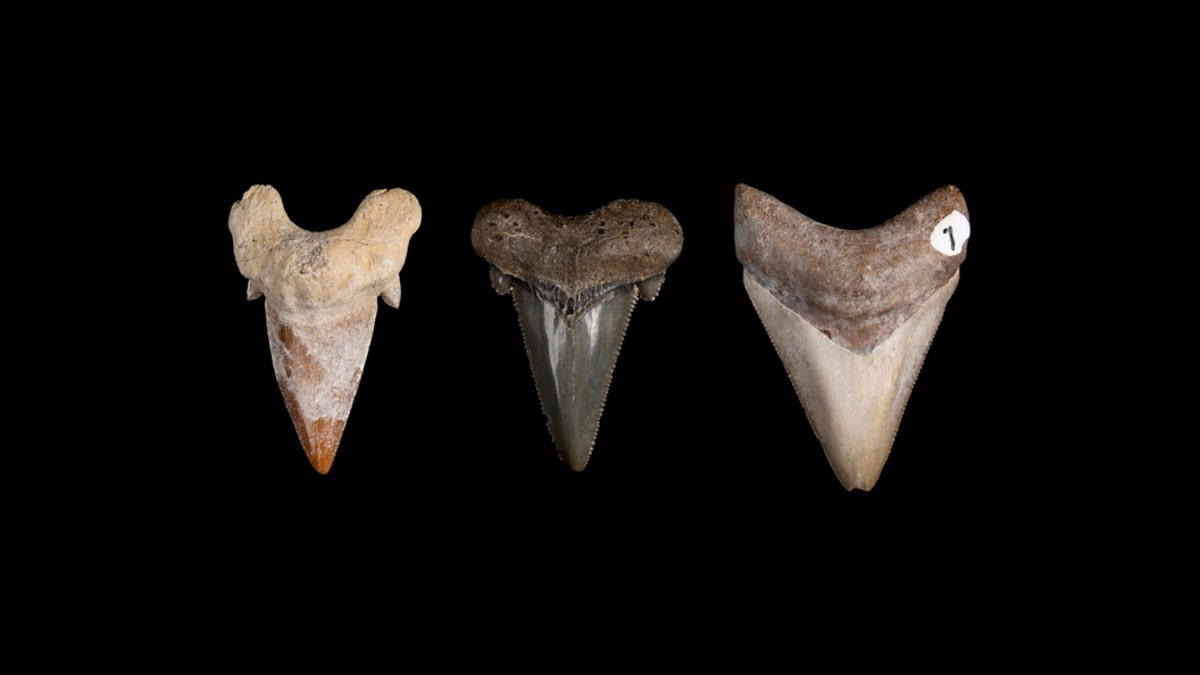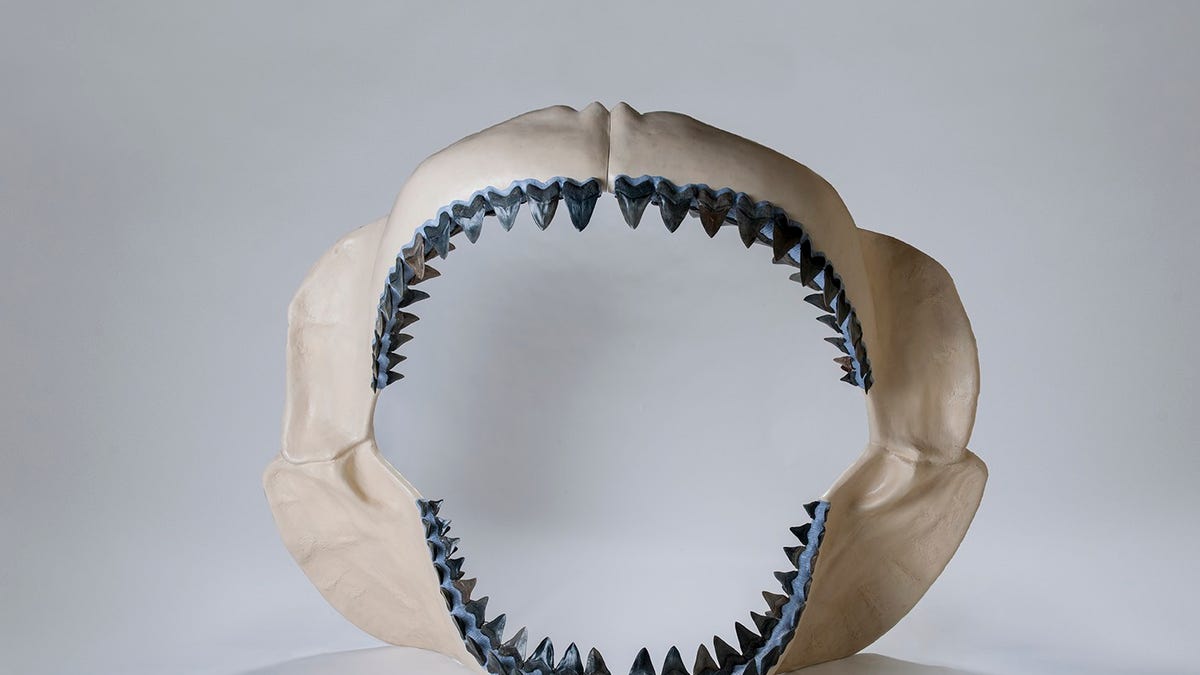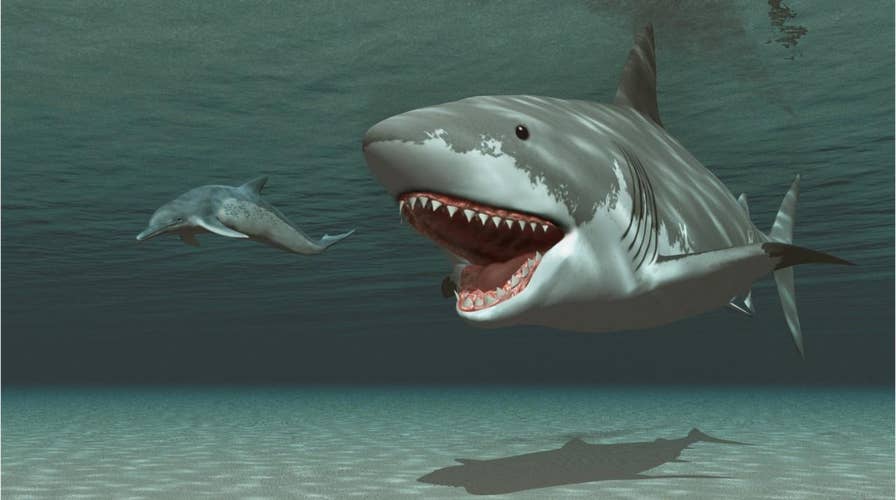Megalodon killer shark may have been wiped out by great whites
A new study suggests that the Megalodon may have been wiped out by its successor, the great white shark.
The megalodon, considered one of, if not the largest marine predator to ever live, had enormous teeth, some approaching nearly 8 inches in length. Now a new study states that the giant shark spent millions of years evolving its teeth before they took their iconic form.
The study, published in the Journal of Vertebrate Paleontology, looks at the differences of 359 fossilized megalodon teeth found on Calvert Cliffs (Chesapeake Bay, Maryland) and compared them to the massive shark's ancestor, Otodus obliquus, which had smooth teeth and cusplets (mini teeth) on both sides of the main tooth.
“This transition was a very long, drawn-out process, eventually resulting in the perfect cutting tool — a broad, flat tooth with uniform serrations,” said study lead author Victor Perez, in a statement. “It’s not yet clear why this process took millions of years and why this feature [the two mini teeth on the sides] was lost.”
MEGALODON SHOCKER: HUGE KILLER SHARK MAY HAVE BEEN WIPED OUT BY GREAT WHITES

These three teeth depict more than 50 million years of shark teeth evolution. Megalodon's earliest ancestor, Otodos obliquus, from left, had smooth-edged teeth with a thick root and lateral cusplets, two mini-teeth flanking the main tooth. Another ancestor, Carcharocles auriculatus, had serrated teeth with lateral cusplets. Carcharocles megalodon had flattened bladelike teeth with uniform serrations and no cusplets. (Credit: Florida Museum, Kristen Grace)
Otodus obliquus, which lived between 60 million to 40 million years ago, was estimated to be between 30 and 40 feet in length, based on the size of fossilized teeth previously found.
It's possible the "cusplets," working in conjunction with the main tooth, acted as a three-pronged approach, similar to a fork "for grasping and tearing fast-moving fishes," the statement added.
Approximately 87 percent of the teeth that have been dated between 20 and 17 million years ago had cusplets, while just 33 percent of those found that were from 14.5 million years ago had them. By 7.6 million years, no fossilized teeth contained cusplets.
Some teeth contained "tiny bumps or pronounced serrations" where the cusplets once were, while others lacked them.
The evolved teeth likely made the megalodon a better hunter, with Perez suggesting it was a "single-strike tactic," done to immobilize the prey and let it bleed.
“It would just become scavenging after that,” he said. “A shark wouldn’t want to grab and hold onto a whale because it’s going to thrash about and possibly injure the shark in the process.”
It's still unclear what the exact reason for the change in teeth was, something Perez said is "still a mystery." “We’re wondering if something was tweaked in the genetic pathway of tooth development,” he added.

This is a reconstructed jaw of a megaldon. (Credit: Florida Museum, Kristen Grace)
MEGALODON MAY HAVE BEEN KILLED OFF BY AN EXPLODING STAR
Megalodon extinction
There are several theories on what led to the extinction of the massive megalodon, commonly believed to have reached 60 feet in length, and weighed as much as 120,000 pounds.
One recent study suggests that the giant shark may have died off sooner than previously thought (at 3.5 million years ago) and may have been out hustled by its successor — the great white.
Another study suggests that "one or more supernova" approximately 2.6 million years ago may have caused a mass extinction of a great number of marine megafauna, including the feared megalodon.




















